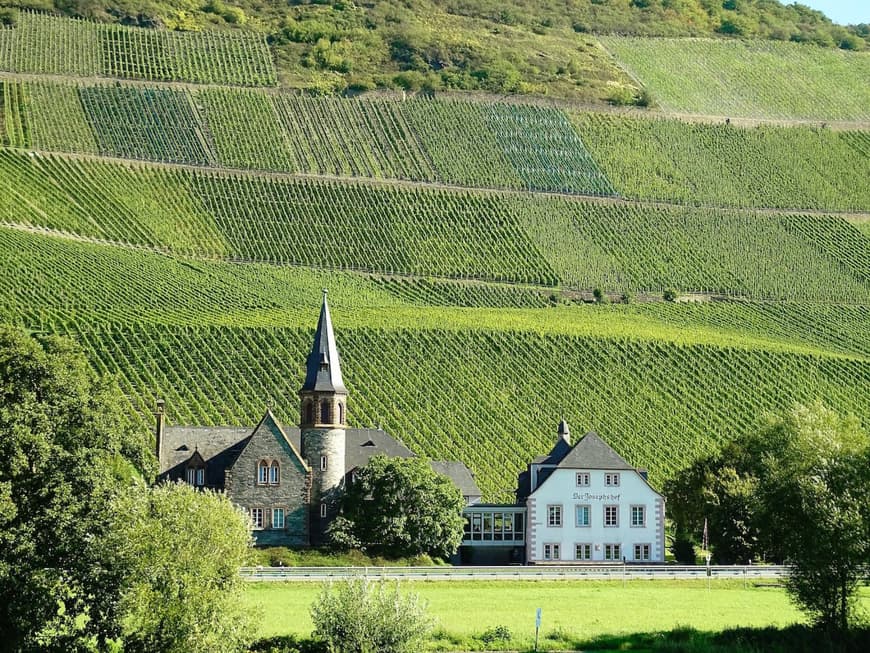
Today, our wine journey of knowledge takes us to the Palatinate. It is the second largest wine-growing region in Germany. Only Rheinhessen is larger. You should remember the term "German Wine Route", as this is the name of the 85-kilometer route through the Palatinate wine-growing region, along which the majority of the Palatinate wine-growing areas are located. We will now give you the most important facts about the Palatinate so that you can shine with your knowledge the next time you enjoy a drop from the region. And if you think you already know everything about the Palatinate, read on! We have a few more entertaining details for you.
Basics about the Palatinate wine-growing region
With over 1800 hours of sunshine a year, the Palatinate is one of the regions with the mildest temperatures in Germany. The Mediterranean climate even allows almonds, figs, lemons and olives to thrive - in Germany!
The Palatinate has been the largest Riesling growing region in the world since 2008 and is therefore known worldwide for the Palatinate Riesling.
45 white and 22 red grape varieties are permitted for cultivation in the Palatinate.
The most important grape varieties in the Palatinate
Here are the top 3 white varieties: In first place with approx. 22% of the area under cultivation is, how could it be otherwise, Riesling. In 2nd place is Müller-Thurgau and 3rd place goes to the Kerner grape variety.
Now the top 3 red grape varieties to remember: Dornfelder takes 1st place with around 14% cultivated area, closely followed in 2nd place by Portugieser. The bronze medal goes to Pinot Noir.
Culture and what else is interesting
The coronation of the German Wine Queen has taken place every year since 1949, usually in Neustadt. The first German Wine Queen was Elisabeth Kuhn, who was also the Palatinate Wine Queen and thus the only official Palatinate and German Wine Queen to be crowned in the same year.
The "oldest liquid wine in the world" is said to be stored in the Historical Museum of the Palatinate. The glass amphora is from the 4th century and contains a yellowish liquid.
Bad Dürkheim is home to the "largest barrel in the world"! With a capacity of approx. 1.7 million liters, it even houses a wine bar.
The "largest wine festival in the world", the Dürkheimer Wurstmarkt, is also celebrated in the same town every year.
Incidentally, the current "Best Young German Winemaker 2015" Christian Nett from the Bergdolt, Reif & Nett winery also comes from the Palatinate. His Scheurebe from the Traditions line, one of the wine tips from sommelier Ina Finn here at Idee für mich, is definitely worth a sip!
Now you not only know the 6 most important grape varieties from the region, you also know that a bicycle tour between almond and olive trees along the "German Wine Route" would certainly be worth a trip. Topped off with a delicious glass of Riesling from the Palatinate!
